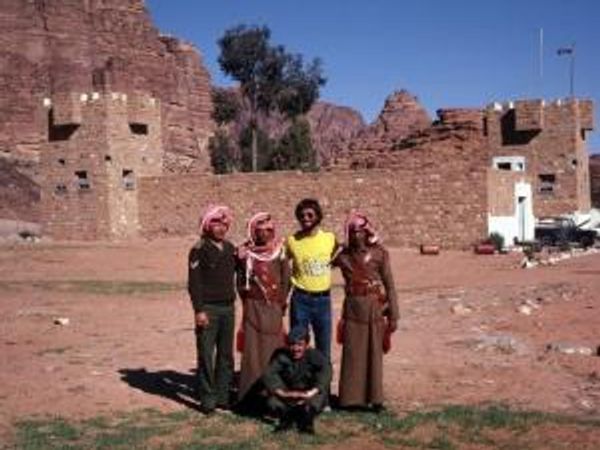General Information

Bedouin life
n Wadi Rum, Bedouin life is a blend of traditional nomadic culture and modern adaptations driven by the growth of tourism. While the truly nomadic existence is disappearing, Bedouins, especially the prominent Zalabieh tribe, have successfully integrated their heritage into the booming tourism economy.

Arab Lawrence
Lawrence was a key figure in the Arab Revolt against the Ottoman Empire. He earned the trust of Arab leaders, including Emir Faisal, and convinced them to adopt guerrilla tactics, such as attacking Turkish communication lines and the Hijaz railway. Lawrence recorded his wartime experiences and his profound appreciation for the desert in his autobiographical book, Seven Pillars of Wisdom, which helped cement his legendary status.

Mammals
Arabian oryx: This white antelope was once hunted to extinction in the wild but was successfully reintroduced to the protected area of Wadi Rum in 2002. They live in an enclosure within the wilderness zone and can be viewed with a special permit.
Nubian ibex: These mountain goats, with their impressive long, backward-curving horns, live in the rocky mountainous regions. Their population was severely reduced by hunting, and conservation efforts are now in place to protect them.
Arabian wolf: The smallest wolf species, these solitary and nocturnal animals are a rare sight. They inhabit mountainous areas deep within the desert and prey on small animals.
Arabian red fox: This desert fox has adapted to its environment with larger ears for cooling and fur between its toes for protection from the hot sand. It hunts for rodents and birds at night but can sometimes be spotted in the late afternoon.
Sand cat: A small, nocturnal wild cat that is rarely seen. It is well-adapted to the desert with thick fur on its paws and preys on small rodents, reptiles, and insects.
Rock hyrax: A small, guinea pig-like mammal that lives in crevices and caves in the mountainsides. They are most active in the morning and evening, when they can be seen sunbathing on rocks.
Lesser Egyptian jerboa: A tiny, kangaroo-like rodent with large ears and eyes, perfectly suited for its nocturnal life. It hops and jumps around at night foraging for food.
Reptiles
Wadi Rum has about ten species of snakes, most of which are non-venomous and rarely seen. Lizard species are more common.
Sinai agama: A relatively large lizard that often basks on rocks. During mating season, males develop a striking blue head and upper body.
Common sandfish skink: This remarkable lizard "swims" through the sand. It is difficult to spot because it spends most of its time beneath the surface.
Arabian horned viper: One of Wadi Rum's venomous snakes. It is nocturnal and spends its days buried in the sand, with only its eyes exposed.
This website uses cookies.
We use cookies to analyze website traffic and optimize your website experience. By accepting our use of cookies, your data will be aggregated with all other user data.